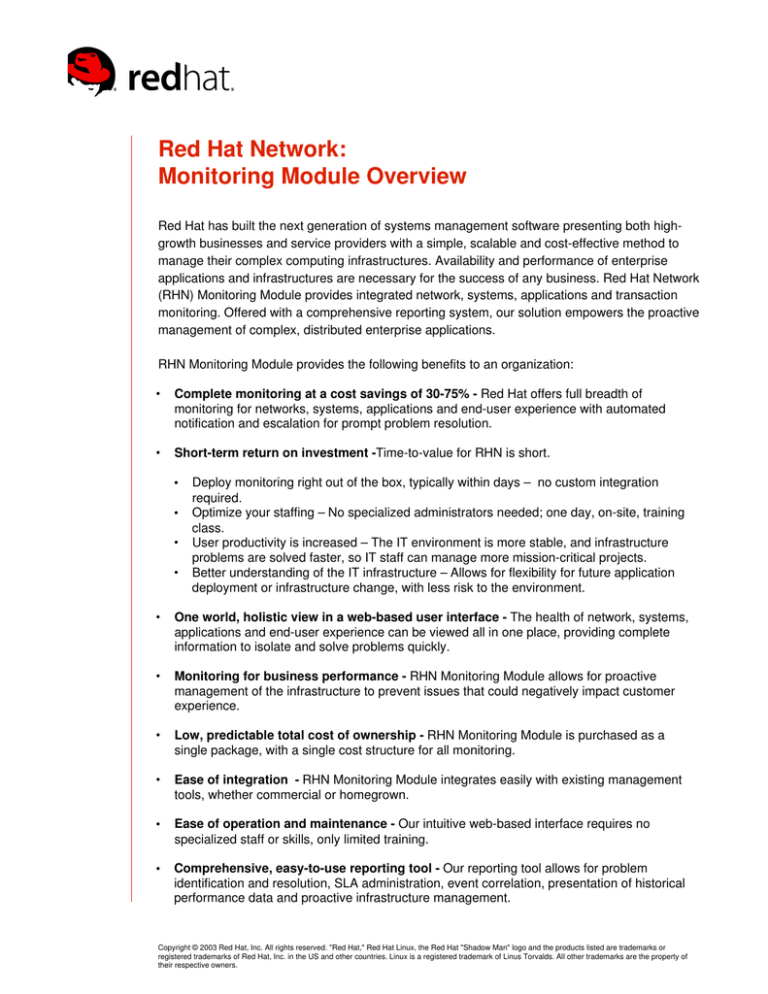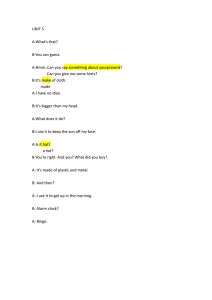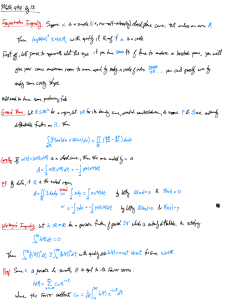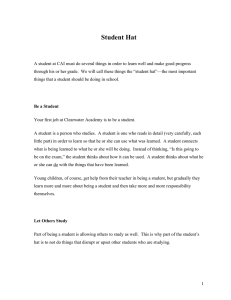
Red Hat Network:
Monitoring Module Overview
Red Hat has built the next generation of systems management software presenting both highgrowth businesses and service providers with a simple, scalable and cost-effective method to
manage their complex computing infrastructures. Availability and performance of enterprise
applications and infrastructures are necessary for the success of any business. Red Hat Network
(RHN) Monitoring Module provides integrated network, systems, applications and transaction
monitoring. Offered with a comprehensive reporting system, our solution empowers the proactive
management of complex, distributed enterprise applications.
RHN Monitoring Module provides the following benefits to an organization:
Complete monitoring at a cost savings of 30-75% - Red Hat offers full breadth of
monitoring for networks, systems, applications and end-user experience with automated
notification and escalation for prompt problem resolution.
Short-term return on investment -Time-to-value for RHN is short.
Deploy monitoring right out of the box, typically within days – no custom integration
required.
Optimize your staffing – No specialized administrators needed; one day, on-site, training
class.
User productivity is increased – The IT environment is more stable, and infrastructure
problems are solved faster, so IT staff can manage more mission-critical projects.
Better understanding of the IT infrastructure – Allows for flexibility for future application
deployment or infrastructure change, with less risk to the environment.
One world, holistic view in a web-based user interface - The health of network, systems,
applications and end-user experience can be viewed all in one place, providing complete
information to isolate and solve problems quickly.
Monitoring for business performance - RHN Monitoring Module allows for proactive
management of the infrastructure to prevent issues that could negatively impact customer
experience.
Low, predictable total cost of ownership - RHN Monitoring Module is purchased as a
single package, with a single cost structure for all monitoring.
Ease of integration - RHN Monitoring Module integrates easily with existing management
tools, whether commercial or homegrown.
Ease of operation and maintenance - Our intuitive web-based interface requires no
specialized staff or skills, only limited training.
Comprehensive, easy-to-use reporting tool - Our reporting tool allows for problem
identification and resolution, SLA administration, event correlation, presentation of historical
performance data and proactive infrastructure management.
Copyright © 2003 Red Hat, Inc. All rights reserved. "Red Hat," Red Hat Linux, the Red Hat "Shadow Man" logo and the products listed are trademarks or
registered trademarks of Red Hat, Inc. in the US and other countries. Linux is a registered trademark of Linus Torvalds. All other trademarks are the property of
their respective owners.
Extensibility - Access to our API allows you to write interfaces to extend the functionality of
our monitoring solution to custom applications or equipment.
RHN Monitoring Module was built from the ground up to meet the needs of next-generation
distributed enterprise applications, allowing for proactive infrastructure management to ensure
availability and performance for a smooth end-user experience.
Monitoring Technology Overview
RHN Monitoring Module provides customers with a complete monitoring, notification, and
trending analysis solution without needing to purchase and maintain a complex infrastructure.
This solution can be provided as subscription software or through a hosted service, depending
on the preference of the customer.
Holistic Monitoring
Providing the end-user with the ability to monitor the whole infrastructure, not just individual
components, allows for a holistic view of the entire infrastructure and how individual events can
affect it. When trying to quickly diagnose a general problem with an end-user application, it is
more effective to view data from each component holistically as a part of the application rather
than from each component by itself. This holistic view becomes even more powerful when
coupled with end-user application performance monitoring data, which allows for the quick
isolation and solution of user problems and provides performance feedback when tuning the
infrastructure.
RHN Monitoring Module functionality is segmented into two categories:
Infrastructure monitoring is a complete view of operations infrastructure, which is monitored
from a Red Hat Local Monitoring Scout™ installed at the customer premise. Infrastructure
monitoring includes:
Operating Systems: Linux, Solaris, Windows, IRIX, Free BSD and HPUX.
Hardware: Performance metrics detailing core infrastructure health. Examples include
disk, CPU and port utilization.
Applications: BEA Weblogic, ATG Dynamo, iPlanet, Apache, Macromedia Cold Fusion,
Oracle, MySQL, LogAgent, RealServer, Microsoft Commerce Server, Microsoft Exchange,
Microsoft IIS, Microsoft SQL Server and Windows Media Unicast Service.
Network Devices: All major vendors including Cisco, Alteon, F5, and Foundry.
End-User experience monitoring is a view of an application from the customer perspective.
This type of monitoring is accomplished via a network of Red Hat Remote Scouts™, monitoring
devices placed strategically throughout the public internet backbone. End-user monitoring
includes:
URL Monitoring: Watches application response time, DNS lookup, connect time and
throughput from multiple points on the public backbone.
Transaction Monitoring: Monitors performance of each step of a multiple-step webbased transaction such as an online purchase from product search through payment
confirmation.
System Architecture Component Overview
Red Hat Network Portal
The user interface for RHN is a web-based application that can be reached from all points on the
Internet. It provides customers with a secure, comprehensive and easy-to-use interface that
details the current status of their network, provides trending analysis data, and information on
notifications.
The RHN interface also enables customer administrators to control how they are monitoring their
environment and when they will be notified of erroneous conditions. Having this application
available from any point on the Internet allows a Systems Administrator or an Operations Director
to access valuable data from anywhere in the world using any device with an HTTPS enabled
web browser.
The RHN Monitoring Module monitors the performance of the hosts on a users network by
utilizing service checks. A Service Check is a Red Hat term for a probe or plug-in that pulls
specific information from a monitored host, such as an application or device, and returns a
metric. Those metrics are compared with customer-configured thresholds, trigger alerts, and are
stored in the Red Hat Monitoring Operations Center (MOC) for historical reporting.
Red Hat has developed a robust reporting mechanism, providing both real-time and historical
trend reporting to help customers solve immediate problems, enforce Service Level Agreements,
and conduct proactive capacity planning.
Red Hat Monitoring Scout™
At the core of RHN Monitoring Module technology is a sensor referred to as a Red Hat Local
Monitoring Scout. The Local Scout is placed on the customer network and runs a variety of
service checks against monitored hosts. All infrastructure monitoring takes place from the Local
Scout, eliminating the need for cumbersome client software to be installed on customer
hardware. Some of these service checks are performed using common application protocols
such as HTTP, SSH, or DNS. Other service checks utilize the SNMP capabilities built into certain
applications and devices.
End-user monitoring is accomplished through a network of Red Hat Remote Scout monitoring
devices placed at strategic locations throughout the public backbone. The Remote Scouts poll
Web addresses to provide an “outside-in” view of a customer infrastructure. In addition,
proprietary Red Hat technology allows for monitoring of both single and multiple-step
transactions.
Notification & Escalation
Once the Red Hat Local or Remote Scout has gathered the monitoring data, it compares the
values against the customer’s configured thresholds for Warning and Critical values. If these
values have surpassed the thresholds for Warning or Critical, the customer will be alerted using
pre-defined contact methods (e.g. pager or email). All data is then stored in a database for the
customer to view via reporting. Configurable escalations allow the user to set how and when the
next member of the support staff is to be alerted if a notification goes unanswered. Advance
Notification gives users the ability to suspend and redirect notifications to other staff members.
This feature also gives users the ability to add additional contacts and provides an autoacknowledgement feature for ease of response.
Operations Center
The Red Hat Operations Center provides up-to-the-minute information on the state of all
monitored applications, network devices and systems.
Features:
Immediate access: Allows users quick access to all monitored hosts, assets and notification
groups to rapidly respond to problems and efficiently modify monitoring and notification.
Status bar: Delivers a snapshot of high-level health statistics. Clicking each icon displays the
items in each status category, speeding up troubleshooting efforts.
Hierarchical network map: Provides real-time status from the overall infrastrucutre to
specific system checks.
Detailed alerts: Provide quick reference on outstanding notifications, including time
delivered, recipient, and source of incident for selected monitors.
Easy configuration: The end-user can add, delete and modify resources, checks and
notification groups with simple, point-and-click functionality.
Reporting Center
Real time and historical reporting covers applications, network devices, systems and
transactions to enable immediate problem solving, SLA analysis and capacity planning.
Service Level Agreements (SLA) pie charts, availability timeline charts, capacity line charts
and event logs for each monitored device, application and group.
Drill down links to view or download every state change event.
CSV export of data for detailed analysis off-line.
Features:
SLA Pie Chart: Graphically compares system availability and performance state with user-set
service thresholds over a specified period of time, making it easy to track system performance
and Service Level Agreements.
Data Trimming: A technique used to eliminate extreme data values and chart noise allowing
system administrators to focus on the details of typical performance.
Calendar: Provides quick access to hourly, daily , monthly and custom reports. The calendar
feature allows the user to setup customized reports with various range capabilities.
Data Smoothing: RHN Monitoring Module offers a suite of data smoothing techniques to be
used on time series line charts. They can be used to expose the patterns and trends to typical
system performance for a chart period.






